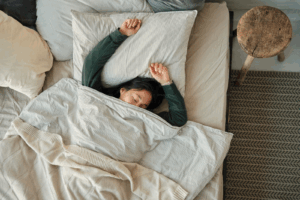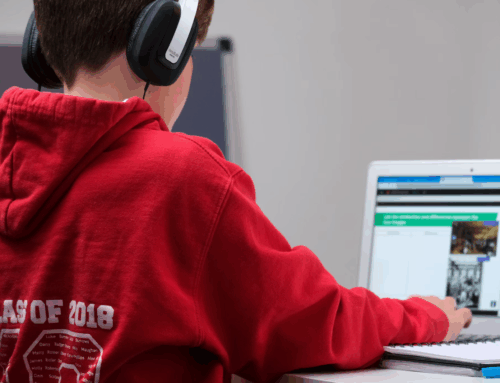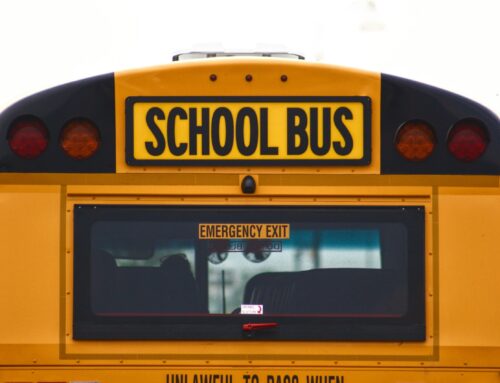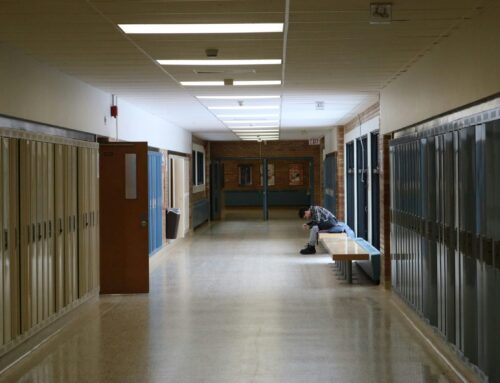 The morning alarm shrieks. You hunt for your phone, squinting at the time—6:30 a.m. But outside, the world is still cloaked in darkness. A chill creeps through the room. You stumble to the kitchen, haunted by the ghosts of summer mornings past. The coffee machine hisses like a creature awakened from its slumber. You shiver. You know what this means, but it’s too late. The annual terror has arrived. Welcome, dear reader . . . to daylight saving time.
The morning alarm shrieks. You hunt for your phone, squinting at the time—6:30 a.m. But outside, the world is still cloaked in darkness. A chill creeps through the room. You stumble to the kitchen, haunted by the ghosts of summer mornings past. The coffee machine hisses like a creature awakened from its slumber. You shiver. You know what this means, but it’s too late. The annual terror has arrived. Welcome, dear reader . . . to daylight saving time.
And while the terror of losing an hour of sunlight may sound dramatic, it’s not entirely without cause. For many people—students especially—the shift to shorter days and longer nights marks the beginning of something more serious: Seasonal Affective Disorder (SAD). SAD is a type of depression that follows a seasonal pattern, often starting in late fall when daylight dwindles. SAD symptoms increase as daylight decreases. When the brain gets less sunlight, it produces less serotonin—happy chemicals—and more melatonin—sleepy chemicals.[1] While the cold weather and decreased amount of sunlight often affects how people think, feel, and behave, significant changes in a person’s mood or behavior may point to Seasonal Affective Disorder.[2]
SAD can cause a person to experience . . .
- A sad, anxious, or “empty” mood.
- Feelings of hopelessness or pessimism.
- Feelings of irritability, frustration, or restlessness.
- Feelings of guilt, worthlessness, or helplessness.
- Loss of interest or pleasure in hobbies and activities.
- Difficulty concentrating, remembering, or making decisions.
- Changes in sleep or appetite or unplanned weight changes.
- Physical aches or pains, headaches, cramps, or digestive problems that do not have a clear physical cause and do not go away with treatment.
- Oversleeping (hypersomnia).
- Overeating, particularly with a craving for carbohydrates, leading to weight gain.
- Social withdrawal (feeling like you’re “hibernating”).[2]
Lastly, many people with SAD report having suicidal ideations or thoughts about attempting suicide. These feelings are serious and should be reported to a trusted medical professional.
Students might show it in subtle ways: a drop in motivation, increased absences, or an unshakable fatigue that no amount of coffee (or energy drinks) seems to fix. Students suffering with SAD may have a noticeable decline in their academic performance, caused by a difficulty in staying focused or motivated. They may be absent frequently or begin to withdraw from social activities and friends. SAD can also cause students to report headaches, changes in appetite, or excessive tiredness, often related to oversleeping.[3]
On November 2, 2025, daylight saving time (DST) ends, and clocks fall back by one hour at 2 a.m. DST was initially introduced in America during World War I to increase productivity by lengthening the workday and conserving fuel. After WWI ended, daylight saving time was reintroduced and appealed a handful of times, until the 1966 Uniform Time Act reestablished the time change. States that do not wish to participate in the twice-yearly change can opt out of DST and remain on standard time—they cannot opt into permanent daylight saving time. [4]
However, recent debates have pointed out the potential physical and mental health risks of bouncing between times and are proposing a permanent switch—either to DST by moving an hour of daylight from the morning to the evening, or to standard time by keeping that hour in the morning year-round. Some proponents of this idea argue that it could help students outside of school by gaining an extra hour of sunlight after school ends, boosting their mental health and well-being. However, others point to cons of adopting a permanent daylight-saving schedule: icy morning commutes, students waiting for the bus in the dark, and later start times that some schools implement in response to DST. Finally, some experts worry that this permanent change would signal our internal circadian clock to wake up later and therefore stay up later—which has been associated with increased drug use, physical and mental health issues, and sleepiness that can cause lower productivity. [5]
Regardless of where these debates take us, understanding how to support students with SAD is key to helping them through the darker winter months. Educators can:
- Try light and color adjustments – The use of amber or red lenses can help relax the eyes and block out more blue light, which may help students feel more balanced and less affected by winter fatigue. [6]
- Promote physical activity – Regular exercise boosts endorphin levels and supports energy management. Winter walks or indoor fitness routines can be especially helpful.
- Encourage healthy eating – Nutritious foods can help combat the effects of SAD and stabilize energy levels.
- Foster open conversations – Talking about SAD and complex emotions can help students recognize their mood patterns and feel more comfortable opening up about their struggles.
- Establish a Supportive Environment – Create a welcoming space where students feel comfortable talking about their mental health. Educators and counselors can host sessions or support groups that normalize mental health discussions, encouraging students to openly share their challenges and coping strategies.[7]
- Watch for adverse reactions to SAD – If a student shows signs of severe depression, it’s essential to seek professional help.
Publishing Solutions Group
At Publishing Solutions Group, we understand that a student’s capacity to learn is deeply intertwined with their overall well-being. External challenges—from the seasonal shift into darker months to the various personal and academic pressures students face—can create significant barriers to effective learning. We recognize that these struggles are not mere distractions but real factors that impact focus, motivation, and, ultimately, academic performance. Our mission is built on the premise that learning must be supported holistically, acknowledging the whole student in every context.
Our commitment is to partner with our clients by providing dynamic, empathetic, and adaptable educational content designed to meet learners where they are. No matter the challenge—be it SAD, stress, or other obstacles—we create the resources to make learning as accessible and effective as possible. By creating materials that are not only rigorous but also engaging and supportive of mental well-being, we empower educators to foster resilient and successful learners, ensuring that every student has the tools they need to thrive through any struggle.
[1] https://kidshealth.org/en/teens/sad.html
[2]https://www.nimh.nih.gov/health/publications/seasonal-affective-disorder
[3]https://psycapps.com/identifying-and-supporting-students-with-seasonal-depression/#:~:text=SAD%20symptoms%20can%20sometimes%20mirror,tiredness%2C%20often%20related%20to%20oversleeping
[4]https://usafacts.org/articles/why-does-daylight-saving-time-exist/
[5]https://www.colorado.edu/today/2022/03/28/why-permanent-daylight-saving-time-bad-idea
[6]https://daveasprey.com/health-benefits-red-light-therapy/
[7]https://www.boystown.org/nevada/news
Photo by Andrej Lišakov for Unsplash.




